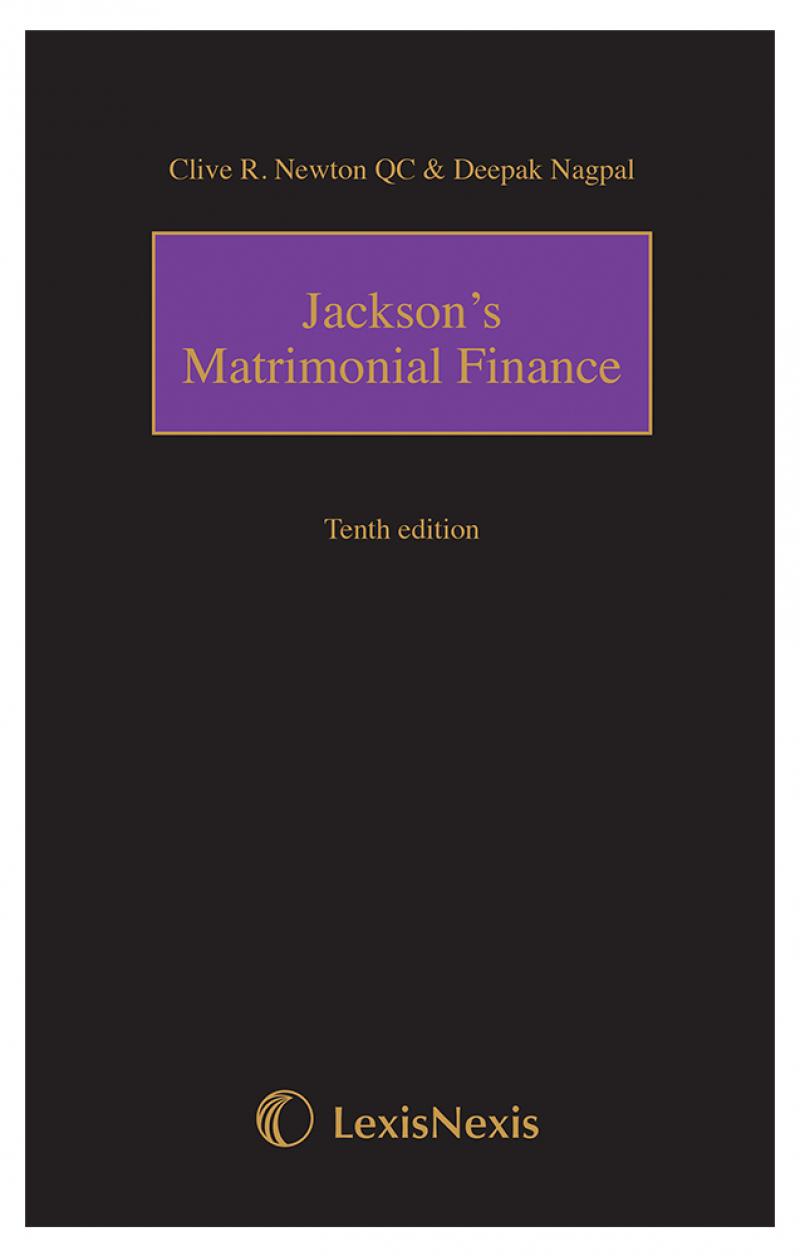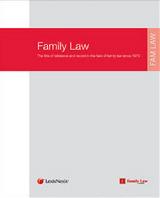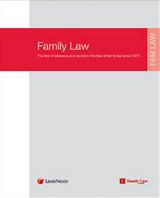- News & Comment
-
Online Shop
Online Services
Looseleafs
Law Reports
Books and eBooks
-
CPD & Events
Webinars
Events
- Authors
- About Family Law
- Contact












 18 FEB 2025
18 FEB 2025

 18 FEB 2025
18 FEB 2025

 18 FEB 2025
18 FEB 2025

 18 FEB 2025
18 FEB 2025

 11 FEB 2025
11 FEB 2025








This was an application by a father for a change of residence, listed for determination before Keehan J in August 2019.
T's parents were married but separated in August 2007, since which time there had been almost continuous court proceedings relating to their son, H (aged 12). In 2007-2008, there were proceedings relating to the contact the father should have with H, during which the mother made allegations of domestic abuse. No findings were made. Then in 2009-2010, the father applied for leave to remove H from the jurisdiction for the purposes of a holiday. In 2011, the mother stopped contact, repeating the domestic abuse allegations which had already been adjudicated upon. Then in 2013-2014 the mother made further allegations against the father, all of which were rejected and contact between H and his father reinstated. Proceedings in 2016-2017 related to issues of contact and mother’s refusal to cooperate with the father in relation to which secondary school H should attend.
Prior to March 2018, H had been having regular contact with his father and the paternal family, which was of a very good quality. Thereafter, there had been no direct contact between H and his father. The father pointed to the irreconcilable duality between H’s WhatsApp messages to him over a period of only 3 weeks. The mother claimed not to know what had caused H to alter his view of his father so dramatically and denied influencing him, although the evidence suggested that she had permitted H to read an intemperate email which the father had sent to the mother.
Dr Braier had provided two detailed reports within the proceedings. She also gave oral evidence at the final hearing. In his judgment, Keehan J recited Dr Braier’s opinions and recommendations extensively, including:
In relation to the father:
‘(F’s) frustration and lack of control over his relationship with H then, has probably intensified any prior temperamental vulnerability, with the aggression noted in the documents a desperate attempt to control and regain power…’
‘Until now, (F) has been so busy fire-fighting, that he has struggled to acknowledge his own end of responsibility for any personal and family difficulties. However, his despair at H’s predicament now looking more set on a trajectory of loss of the paternal relationship, has triggered more reflection, remorse, sadness, and a wish to re-establish his connection without interference.’
In relation to the mother:
‘(M) begins from a compensated position of poor self-worth, with self-doubt and jealousy, her interaction with others framed within a constricted mind set. She has an obsessive concern that (F) (and particularly his mother who (she) deems influences him unduly) are malevolent in nature.’
‘She experiences herself as a victim, badly treated by others, rising above it in a saintly manner in her mind, but not in practice. M constructs narratives based on her own feelings, projecting her concerns and convictions out on the world, so that others’ behaviour fit her own preconceived ideas and concerns’.
‘There is a difficulty shifting that perspective …. (M’s) reflective function can be distorted, unintegrated and almost bizarre at times, particularly when applied to the paternal family. Her narratives are designed to reveal herself in the best possible light at the expense of any plausible understanding of the relationships around her, to the point where fantasy and ideals may impact on her grasp on reality at times.’
‘(M) disavows any responsibility at all for what is happening between H and his father, suggesting it is entirely between them, with no personal role at all. What makes this bizarre is her failure to grasp that professionals will have access to a documented history pointing to her own historical behaviour around contact as a more plausible explanation…’
In relation to the child, H:
‘H’s current expressed wishes may reflect mother’s difficulty in providing H with an accurate mirror of his own feelings as a child. She would have been exploring and redefining H’s experiences in terms of her own deeper concerns and needs, gradually changing his perception of what happens to him with his father (and possibly others) to fit her own view of herself as a protector, so that she can continue to provide the special nurturing she feels H needs to feel safe and cared for.’
‘H’s presentation suggests he is triangulated within his parents’ conflictual relationship. His angry rejection of his father serves a function for his mother within the parental separation. H’s own emotional needs, including his right to have a relationship with his father, is being ignored by (M) in order to serve her conflict with (F).’
‘H is currently prioritising his mother’s needs over his own, and no longer sees his relationship with his father as bringing anything other but pain and complication...’
‘H’s responses from the Child Attachment Interview, perception of parent’s scale and the Bene Anthony Family Relations test were all consistent with those typically seen in alienated children…’
As to the way forward:
‘Mother’s opinions about the father have been transferring to H gradually over time, and are now complete, with his independent rejection of contact. Mother herself would say that this is the result of H seeing ‘who his father really is’, but H’s presentation suggests it is more likely to reflect alienation. Mother’s views of the father are entrenched, and the prognosis for any shift in that view, if H remains with his mother, does not look promising’.
‘Unfortunately, therapeutic intervention aimed at restoring H’s relationship with his father whilst in the care of his mother is ill-advised, not only in light or the research evidence, but the failure of any previous threat of change of residence to change the course of this case or mum’s stance, with the consequence that H now has no relationship with his father’.
‘H has and is likely to continue suffering significant social harm with the current arrangements, exposed to conflict from both parents because of his mother’s excessive unwarranted concerns…’
‘Her views and actions, as well as the father’s unhelpful and intense attempts to convince H ‘of the truth’, has resulted in dysfunctional attachment strategies in H of anxious conformity, psychosomatic symptoms, triangulation within his parents’ conflictual relationship and rigid schemas. A child’s alienation from one of his parents, in the manner which has now finally happened to H, is associated with a higher risk of long terms problems of poor mental health and relationships’.
‘Cases like this require practitioners with considerable experience and specialised training in the area of implacable hostility and alienation, within the legal framework, with judicial oversight, with restoration of H’s relationship with his father as the primary consideration, to protect him from further harm.’
‘The probability of (M) being a genuinely active or willing participant in a process of reunification, where she can accept her own contribution, even inadvertent, is currently very low.’
‘It is very likely now that if H remains with his mother, he will not enjoy a relationship with his father, so that a transfer of residence is, sadly, the only feasible route to reunification at this stage.’
The author of a s.37 report, a social worker, gave evidence. It was noted that she had no previous experience of parental alienation. The Judge found the report to be woefully inadequate. It was critical of the father but not of the mother and had no regard to Dr Braier’s opinion and conclusions. Accordingly, Keehan J took no account of the report or her oral evidence.
The court also heard evidence from the NYAS worker who, for the purposes of compiling her report, had spoken only once to each of the parents briefly by telephone. She recommended that H should live with his mother and have no contact whatsoever with his father. In her report, she considered only the negatives about the father, reflecting the mother’s criticisms. There was no consideration at all of the adverse role of the mother in H’s life. She accepted H’s expressed wishes and feelings at face value. She made only a passing reference to Dr Braier’s report. In her oral evidence, the NYAS worker completed a volte face, in that she was unable to make a recommendation to the court about with whom H should live or the time he should spend with the non-resident parent. In the view of Keehan J, the omissions and deficits in her report undermined its reliability.
The father fully supported the approach of Dr Braier and was committed to undertaking the work she had advised. He admitted that his frustration at the lack of a relationship with his son had caused him at times to act inappropriately. He said H was his first priority and that if residence of H was transferred to him, he would ensure that H maintained a positive relationship with his mother.
The mother opposed a transfer of residence to the father. She said that H needed more time to re-establish his relationship with his father. She accepted that she was partially to blame for the breakdown of contact but denied that she had influenced H or questioned him. Keehan J found the mother to be wholly passive aggressive in giving evidence, taking every opportunity to castigate and blame the father for the breakdown of contact.
Held – Keehan J – making a child arrangements order that H shall live with his father and spend time with his mother (subject to a 3 month embargo in respect of direct contact):





Leave a commentOrder by
Newest on top Oldest on top